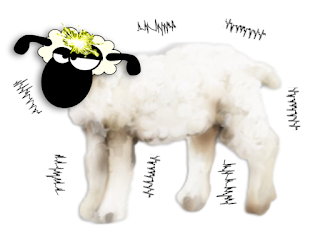Lamotrigine (Lamictal)
Excerpt from Cafer's Mood Stabilizers and Antiepileptic Drugs, available on Amazon
Lamotrigine is the mood stabilizer of choice for maintenance of bipolar disorder. Lamotrigine has few health risks and few side effects. The most commonly reported side effects at high doses are dizziness and blurred vision. Lamotrigine does not cause weight gain and is generally non-sedating. No lab monitoring is required. It is the most effective stabilizer for preventing bipolar depressive episodes and has been demonstrated to be effective for unipolar depression.
Lamictal is of no use for an acute manic episode because the dose must be slowly titrated over 5 weeks to avoid life-threatening skin reactions including Stevens-Johnson syndrome (SJS) and toxic epidermal necrolysis (TEN). Lamotrigine should be stopped immediately in the event of a serious dermatologic reaction. Notwithstanding the risk of SJS, Lamotrigine is one of the safest psychotropic medications. It is nontoxic in overdose. Dose is determined by clinical response rather than serum levels. If a lamotrigine level is ordered, results may take a week because local laboratories must send the blood sample to an outside lab.
❖ Antiepileptic ❖ Voltage-gated sodium and calcium channel blocker ❖ Glutamate ⇩ | FDA approved for: ❖ Bipolar I maintenance ❖ Focal seizures ❖ Lennox-Gastaut syndrome ❖ Bilateral tonic-clonic seizures | Used off-label for: ❖ Bipolar II maintenance ❖ Major depressive disorder ❖ Borderline personality disorder ❖ Neuropathic pain ❖ Fibromyalgia ❖ PTSD ❖ Other seizure disorders |
 |
| "Lamb ictal" - “Ictal” refers to a neurologic event such as a seizure. |
Lamictal is of no use for an acute manic episode because the dose must be slowly titrated over 5 weeks to avoid life-threatening skin reactions including Stevens-Johnson syndrome (SJS) and toxic epidermal necrolysis (TEN). Lamotrigine should be stopped immediately in the event of a serious dermatologic reaction. Notwithstanding the risk of SJS, Lamotrigine is one of the safest psychotropic medications. It is nontoxic in overdose. Dose is determined by clinical response rather than serum levels. If a lamotrigine level is ordered, results may take a week because local laboratories must send the blood sample to an outside lab.
Lamotrigine has some unique aspects. Among several mechanisms of actions, it blocks the release of glutamate, the brain’s principal excitatory neurotransmitter. Lamotrigine is a broad-spectrum AED, effective for several types of seizures.
High-dose lamotrigine can shorten QT interval, which does not pose a clinical risk, except in the case of familial short QT syndrome or in combination with other QT-shortening drugs such as rufinamide (Banzel), digoxin or magnesium. Contrast this with the vast majority of psychotropic medications that prolong QT interval.
Stevens-Johnson syndrome (SJS) | Benign rash |
❖ Usually occurs between 1-12 weeks ❖ Purpuric (non-blanching), may be tender ❖ Rapidly confluent and wide-spread ❖ Usually involves neck and above ❖ Can involve conjunctiva, mucous membranes ❖ With fever, malaise or lymphadenopathy ❖ Leukocytosis | ❖ Peaks at 10–14 days ❖ Non-tender ❖ Spotty (non-confluent) ❖ Below the neck ❖ No involvement of mucous membranes ❖ No fever, malaise or lymphadenopathy ❖ Normal CBC and CMP |
Lamotrigine is principally metabolized by UDP-glucuronosyltransferase (UGT) in the liver, as in “U Got Tagged!” (conjugated) with glucuronic acid. Specifically, UGT1A4 is the most relevant UGT enzyme. CYP450 enzymes are not involved. Lamotrigine is not an inducer or inhibitor of other drugs, and is only a victim (vulnerable substrate) of a small number of kinetic interactions.
Dynamic interactions:
❖ Sedation/CNS depression (uncommon)
❖ Shortening of QT interval (at high dose)
Kinetic interactions:
❖ UGT substrate
 |
Valproate (VPA), represented by the comb, doubles lamotrigine blood levels. |
Starter pack | For those taking | Pack contains | Standard titration | Max Dose |
Orange pack | No interacting medications | 5 week supply = 25 mg tabs #42, 100 mg tabs #7 | 25 mg QD x 2 weeks, then 50 mg x 2 wk, then 100 mg x 1 wk. The usual maintenance dose starting on week six is 200 mg dosed AM, HS or divided 100 mg BID. | 400 mg total (200 mg BID) |
Blue (half strength) | Valproate (Depakote) Valproic acid (Depakene) | 5 wk supply = 25 mg tabs #35 | 25 mg every other day x 2 wk, then 25 mg QD x 2 wk, then 50 mg QD x 1 wk. Usual maintenance dose starting week six is 100 mg QD. | 200 mg total (100 mg BID) |
Green (double strength) | Carbamazepine (Tegretol), Phenytoin (Dilantin), Phenobarbital (Luminal) or Primidone (Mysoline) | 5 wk supply = 25 mg tabs #84 100 mg tabs #14 | 50 mg QD x 2 wk, then 50 mg BID x 2 wk, then 100 mg BID x1 wk,then 150 mg BID x 1 wk. Usual maintenance dose is 200 mg BID starting week 6. | 700 mg total (350 mg BID) |
Copyright 2020, CaferMed LLC





Comments
Post a Comment